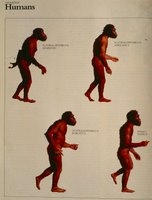
Earth and Human History: An Overview
Lecture notes from GEOG 3020- Human Ecology:
Dr. Eric Karlstrom, August, 2009
Evolution on a large scale unfolds, like much of human history, as a succession of dynasties.
E.O. Wilson, The Diversity of Life
The earth is the only world known, so far, to harbor life. There is nowhere else, at least in the near future, (to which) our species could migrate.
Carl Sagan, Pale Blue Dot
BEGINNINGS
There are approximately 4000 different human cultures today. There are nearly 7,000 different languages, of which over 500 are nearly extinct. All cultures have some form of creation story. The Tibetans believe that humans were born when an angel (in the form of an ogress) came down and mated with an orangutan. In Hopi cosmology, the earth is our mother and the sun is our father and it is our role to care for the earth and all creation. The Hopi believe that we are now in the fourth world and that the previous three worlds were destroyed by the Creator because humans became too greedy and violent and did not take care of the earth. And, of course, the Book of Genesis has all humans descending from Adam and Eve in the Garden of Eden.
The Scientific Creation Story
Just as scientific investigations are continually ongoing, our new, scientific creation story is also still evolving. Science is simply an objective way of asking questions and getting answers, based on testing hypotheses (theories) and assumptions by making observations and acculating information. Because there are still many unsolved mysteries in the universe, our scientific story is not the final word and it is continually being revised as we gather more information. But it is probably the best and most accurate explanation we have available to us of how we got here. (Where we are going and how we should proceed are other questions, of course).
A. Chronology of Events
1) BIG BANG: Astronomers and physicists have developed a theory or model of the universe that posits that all energy and matter were concentrated in a single infinitely small point which exploded cataclysmically about 14 billion years ago (Ba) and have been flying apart ever since. However, this model is based on certain simplifying assumptions, such as Einstein’s theory of general relativity. If the assumptions are disproven, as they could be, new theories and models will have to be developed. Regardless, astronomers today speak in terms of billions of galaxies in the universe, each of which has billions of stars.
2) EARTH AND SOLAR SYSTEM: Our own star, the sun, and it’s nine planets and their moons came into being about 4.6 billion years ago. The earth itself is thought to have formed by accretion of many variously sized “planetesimals”, or small bodies of rock and frozen gas. The earth’s age is estimated on the basis of rates of radioactive decay of elements in our oldest known rocks. The chemistry of our oldest rocks indicates that our primeval atmosphere consisted of hydrogen (H), helium (He), methane (CH4), carbon dioxide (CO2), and ammonia. There was little or no oxygen and there was no protective ozone layer in the stratosphere to filter out harmful ultra-violet (UV) radiation. Hence, the first life was anaerobic. For the first half a billion years, Earth was continually bombarded by comets and asteroids. Study of ancient rocks suggests that by about 3.9 billion years ago, the amount of oceanic water was near its present-day value. This water came from two main sources: out-gassing of great volumes of water from inside the earth and from comets. Comets, asteroids and pieces of nearby planets like Mars may have also transported organic molecules (or possibly even life itself) to our planet’s surface. Some scientists believe that organic molecules can be detected on Martian rocks recently studied.
What was the Earth like 4.4 billion years ago? It was rotating far faster than today, so the days would have been much shorter. The sun was much smaller and about one third dimmer than today. The sky would have been orange to brick red in color because of the different composition of atmosphere and there would have been NO LIFE AT ALL.
We subdivide geologic time based on the kinds of fossils found in different age-rocks, which can be independently dated by radiometric measurements.
3) PRECAMBRIAN ERA – 4.6 to 0.54 billion years ago (Ba).
a) The first microbial life appeared on earth sometime between 4.1 and 3.9 Ba (0.5 to 0.7 billion years after the earth formed). The oldest mineral grains in rock date back to 4.2 billion years. The oldest fossil life dates back to about 3.8 billion years.
Andrew H. Knoll, Professor of Earth and Planetary Sciences, stated:
These (anaerobic, bacteria-like) microorganisms developed in what is now Western Australia. These single-celled creatures were capable of photosynthesis (in which sunlight and water and CO2 are utilized by plant to produce food – glucose- and release oxygen). Three major domains of life may have developed concurrently: Bacteria (including cyanobacteria), Archaea (including the extremophiles) and Eucarya (which eventually develop into plants, animals, fungi, etc.) The first two groups included prokaryotic cells and have undergone virtually no evolutionary change in the past 4 billion years. The extreme thermophiles could survive temperatures well above boiling (100? C). By about 3.5 Billion years BP, surface temperatures of the planet had dropped to about 70?C, permitting evolution of cyanobacteria. Prokaryotic cells of the Bacteria and Archaea predominated between about 4 and 2 billion years ago. Some Eucarya eventually developed eukaryotic cells which would enable greater specialization and eventually, complex, multi-cellular life forms.
b) 3.4 billion years ago (Ba): Stromatolites (algal blooms of blue green algae) develop. Nearly identical forms still exist today.
c) 2.4 to 2.3 Ba: Snowball Earth! At about 2.4 to 2.3 Ba, the first known “Snowball Earth” episode occurred, in which climate cooled precipitously. During these earliest glaciations, glacier ice was found at virtually all latitudes, including the equatorial latitudes. Imagine the whole earth looking something like Antarctica! At these times, Earth probably teetered dangerously close to being too cold for any life to survive. Estimates are that not only land surfaces but also oceans were frozen to great depths and average surface temperatures were from –20 to –50? C. According to Svensmark and Calder (The Chilling Stars: A New Theory of Climate Change, 2007), these snowball events coincided with starbursts- episodes of star-birth and star-death in the Milky Way galaxy provoked by brushes with other galaxies. At these times, cosmic rays were much more abundant than usual, causing greater cloud cover, and reflection of solar radiation away from the Earth’s surface.
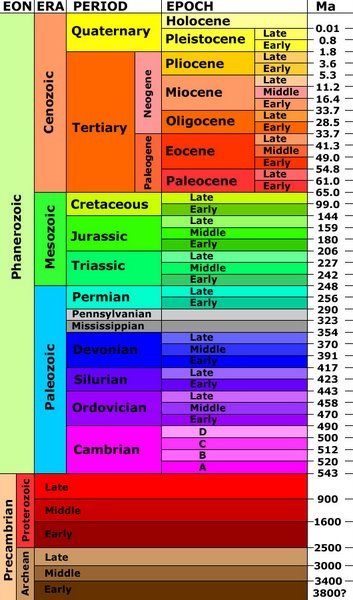
(Figure 1. Geologic Time Scale)
The “Snowball Earth” and subsequent deglaciation probably forced two extremely important developments: 1) The Snowball Earth probably resulted in the most complete “Mass extinction” in our planet’s history. Life would only have survived near hot springs and near hydrothermal vents. And 2) deglaciation probably resulted in a radical shift from cold to warm, and from an oxygen-poor to an oxygen-rich environment, forcing rapid adaptation and evolution of the few surviving creatures.
Rocks of this age show the effects of photosynthesis. Iron and other elements in the rocks are oxidized, giving rusty colors, so there must have been enough free oxygen by this time to combine with iron and other metals. This also breathable atmosphere must have placed an enormous evolutionary pressure on the primitive life forms at that time. Aerobic, eukaryotic, single-celled organisms began to appear shortly thereafter.
Eukaryotic cells, unlike prokaryotic cells, have a distinct nucleus and can survive in an oxygenated atmosphere. These cells invented meiotic sex. Now diversity could expand a hundred fold because for the first time, two genetically different beings could combine and create a different offspring. Eukaryotes also developed the habit of eating other beings and eventually evolved into multi-cellar animals.
d) Second Snowball Earth (750 to 580 Ma) during the late Precambrian Era: Between about 750 and 580 Ma, the earth was again locked in the grip of a second tremendous ice age. Mass extinction must have occurred again, as well as rapid evolution among newly evolved animals. Small populations of life probably huddled around undersea volcanoes and hydrothermal vents in the ocean. Then when climate warmed after deglaciation, life began to diversify dramatically in the CAMBRIAN EXPLOSION.
In Rare Earth, Ward and Brownlee, note:
e) CHANGING CLIMATES AND MOVING CONTINENTS! Paleoclimatic records show that Earth’s climate alternates between hot house and cold house conditions. For most of Earth’s history, climate has been considerably warmer than today (average of 10 degrees C warmer or more). However, during temporary cold house conditions, ice ages have engulfed the planet many times in the past as well. Long and short term glacial/interglacial cycles have forced sea level changes of upwards of 150 to 200 m. This created and destroyed land bridges and corridors. Also, average temperatures in continental areas seem to have fluctuated by as much as 10 to 20? C during the Pleistocene Epoch (2 Ma to present), thus displacing many plant and animal communities.
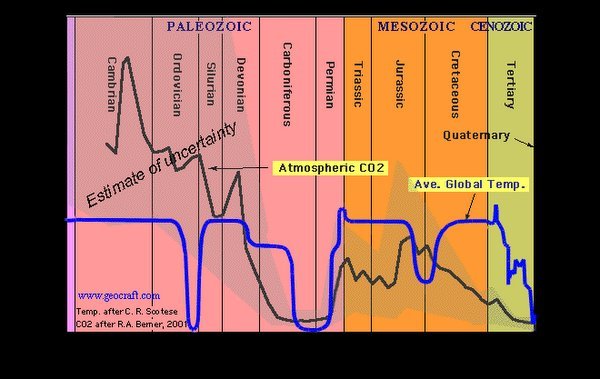
Figure 2. Estimated average earth temperature and atmospheric CO2 concentrations for the past 600 million years. After Scotese and Bernier, 2001

Figure 3. Variations in sea level over past 600 million years.
Since the late 1960’s, the theories of plate tectonics and continental drift have caused a revolution in the earth sciences. Current research suggests the earth’s crust is divided into a series of about 10 major plates and that these are constantly in motion. Over geologic time, these major plates have periodically joined together to form supercontinents. Ancient examples include the formation of the supercontinent Columbia (Nuna) about 1.8 Ba (billion years ago), Rodinia at about 1.1 to 0.75 BYA, Pangaea at about 250 Ma (million years ago), and possibly another supercontinent from between 600 and 550 Ma, termed Pannotia.
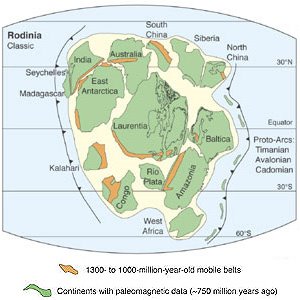
Figure 4. Reconstruction of Rodinia at 750 Ma, Torsvik, 2003
4) PALEOZOIC ERA (“Old Life”: ca. 600 to 240 Ma): The first multi-cellular life appeared following the warming of the planet after the second “Snowball Earth” and the breakup of Rodinia, dating back to about 600 Ma and is found in fossils at Flinders Ranch, Australia. Here, ancient beach sediments are full of soft-bodied animals, such as jelly fish and worms.
THE CAMBRIAN EXPLOSION: At about 543 million years ago (Ma), the fossil record indicates there was an explosion of new life forms with extremely high levels of innovation. Within a few million years of this turning point (about 543 Ma), all the seas were swarming with ALL THE MAJOR ANIMAL PHYLA (the categories of animal life characterized by unique body plans, such as arthropods, mollusks, chordates), including myriad forms of life, swimmers, prowlers, burrowers, and sedentary beasts. Three billion years of mind-numbing simplicity was now followed by spectacular, burgeoning complexity. Fossils indicate that the Cambrian oceans actually had greater variety of life (that is number of phyla) than the modern oceans. (However, the degree of complexity has increased – our modern seas now contain twice as many species as the Cambrian world).
Because Darwin viewed natural selection (evolution) as an essentially gradual process capable of producing great innovation, but only over long time periods, he balked at the idea of rapid change. He knew about the Cambrian explosion in the fossil record from the writings of Charles Lyell and other geologists and he was greatly perplexed by the sudden appearance of all these new life forms. He suggested that simpler forms must have existed earlier but their remains had just not been found. In his Origin of the Species, he writes of the Precambrian: “During these vast, yet unknown, periods of time, the world swarmed with living creatures”. Actually, he was right: Scientists have more recently shown that the ancestors of the creatures of the Cambrian explosion did exist, but their fossils are rare, small, and lacked skeletons, and thus, were harder to find. Nonetheless, the explosion of multi-cellular organisms did happen very rapidly.
Charles Walcott described the enormous diversity and complexity of Cambrian creatures in the Burgess Shale in 1909. The Burgess Shale is about 530 My old and is a rock formed of marine deposits found high in the Canadian Rocky Mountains of British Columbia, Canada. This formation provides probably the best window into this time period. (See Stephen Jay Gould’s book, Wonderful Life). The rocks were deposited in a near-shore ocean environment and include many types of arthropods (the dominant phyla of animals on the earth today, including uniranions (insects), chelicerates (spiders), crustaceans (lobsters, crabs, shrimp, scorpions, and over 20 or 30 kinds now extinct, including the trilobites). Walcott could explain this incredible profusion of life in two ways. First, he could say that the Burgess Shale discovery confirmed an explosive appearance of life in the Cambrian Period, thereby apparently disproving Darwin. Or he could view the Burgess Shale in the context of gradualism and continuity, and thereby maintain the Darwinian worldview. He chose the latter. So this Darwinian view of gradualism was maintained until the 1960’s and 70’s when Harry Wittington and his students re-examined the Burgess Fauna and realized that Walcott had squeezed many Cambrian creatures into the wrong groups. He concluded that as many as a 100 phyla were present, and not just the 30 that Walcott proposed. Most of these phyla became extinct in short order, leaving about the present level of diversity.
Phyla refer to major body plans and come just below kingdom- (Plants and animals) and above classes (mammals, reptiles, etc.) in the Linnean taxonomic system. There are 30 major phyla in the world today, just as there have been for most of the past 500 million years. Phyla are discrete body plans on which many variations may be created. The phylum Arthropoda are the most populous (these have jointed appendages and include insects, centipedes, millipedes, spiders, crabs, etc). The phylum Chordata includes humans and all other vertebrates. According to Gould, the Burgess Shale teaches us that “evolution produced an incredibly prolific bush that spread its branches suddenly half a billion years ago and has ever since seen bits of life fall away”. So therefore the history of life involves explosive innovation, then massive removal of species along with differentiation within a few surviving stock.
b) First fish-like animals: The earliest true vertebrates about 500 Ma (million years ago) were similar to lampreys and hagfishes of today but had heavy armor or external bone rather than a bony, internal skeleton. They had no jaws and had, in fact, no bones in their bodies. Their internal skeleton was made of cartilage or gristle.
In the Devonian Period (about 400 Ma), fishes diversified greatly. Cartilaginous fishes, including primitive sharks, developed jaws and teeth, but their internal skeleton was still cartilaginous material. Also, primitive ray fishes, which then comprised about half of all vertebrates, appeared about this time. Primitive plants and insects developed on land at this time. Some fishes lived in shallow lagoons and swamps and oasis pools which occasionally dried out. From these areas came the first land vertebrates (such as the labyrinthodonts of the late Devonian Period) by about 380 million years BP, which eventually evolved into the amphibians.
About 345 Ma, when the Carboniferous Period began, the ocean was full of fish, invertebrates and aquatic plants and the land was producing new species, including giant mosses, ferns, spiders, insects, and amphibians. The world’s first forests consisted of giant club mosses, huge horsetails, and tree ferns. The forests were full of animal life. These swamps which were later buried by younger sediments and transformed into the world’s great coal deposits.
c) Age of Amphibians: Late Paleozoic Era, 345-250 Ma: The Pelicosaurs, some of the earliest mammal-like reptiles evolved about 300 to 250 Ma during the late Permian to Triassic Period.

Figure 5. Permain faunas
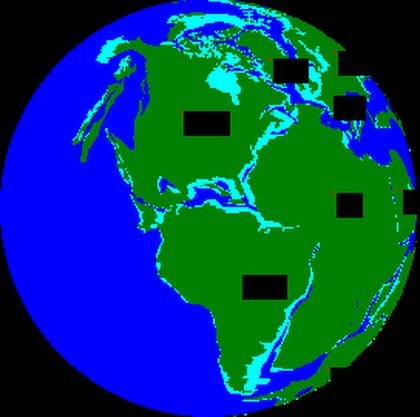
Figure 6. Reconstruction of Pangaea supercontinent, about 250 Ma
d) End of Paleozoic- The Permian extinction or Permo-Triassic Event: About 250 Ma, 96% of all marine species and 70% of terrestrial vertebrate species became extinct and over half of all marine families disappeared. This is probably the most catastrophic of all mass extinctions that have occurred on Earth! Possible causes of this event that have been theorized include: 1) glaciation on Gondwana (southern supercontinent) and widespread cooling and lowering of sea level, 2) the formation of Pangaea and loss of continental shelves, and increased volcanic eruptions.
5) Mesozoic Era (250 to 65 Ma)- The Age of Dinosaurs: One line of amphibians developed stronger legs and evolved into reptiles with waterproof skin (they didn’t lose body fluids through skin), and so they were no longer tied to water. A tremendous diversity of species of all sizes evolved and the reptiles inhabited all the world’s ecological niches- oceans, land, and air. Hypsilophodonts, the “gazelles” of the dinosaur world, were herbivores which flourished for about 100 million years. Duckbilled dinosaurs, hadrasaurs, were also herbivores. The Pterosaurus was the first vertebrate to fly. Many scientists believe that birds evolved from dinosaurs.
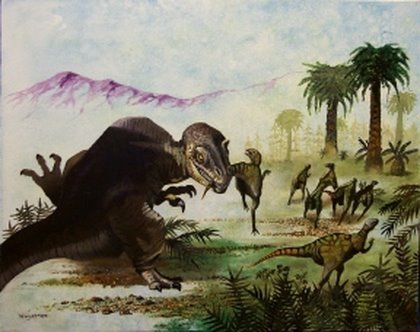
Figure 7. Allosaurus/dryosaurus, from McKee
Dinosaur National Park is a quarry in northeastern Utah in the Morrison Formation (Jurassic Period). Dinosaur bones excavated here are about 150 million years old. The skeletal remains were deposited in a sand bar along an ancient river and were later buried by many tons of sand, volcanic ash, and marine muds. Later, uplift of the area and erosion re-exposed the bones as fossils. Over 2000 bones of many species have been exposed in the rock face.
The Cretaceous/Tertiary Extinction: The end of Mesozoic and the dinosaurs came with another mass extinction in which about 50% or more of all species became extinct. The leading theory is that the extinction was caused by a giant asteroid or comet that hit the earth.
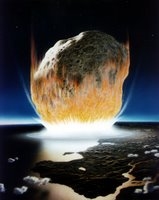
Figure 8. Meteor/asteroid/comet impact
Supposedly, the impact threw out enough dust to block the sun for many years- long enough to kill most green plants on lands and in the sea. Therefore, only small animals that could feed on carrion and decaying vegetation could survive. That left small mammals and birds to re-colonize a virtually empty planet in the Cenozoic Era (era of new life). Evidence for this theory includes a thin layer of dust and ash in rocks which is enriched with iridium (an element not found on earth but associated with comets, asteroids, etc.). Geologists believe the impact created a crater 180 to 1300 km wide now named Chicxulub near the present Yucatan Peninsula. The killing mechanisms would have included rapid cooling, acid rain, and global wildfires. It is estimated that the impact of a planetesimal twice the size of the one which caused the K/T extinction could eradicate all life on earth.
9) Cenozoic- Age of Mammals: Small mammals first appeared in the Mesozoic Era and existed simultaneously with the dinosaurs. After the K/T extinction, mammals and birds took over and colonized the vacated ecological niches, rapidly diversifying and expanding into all available ecological niches. New mammals included primates, carnivores, and Condylorthrans (now extinct primitive hoofed animals). Many of these became overly large and became extinct. The period of mammal gigantism culminated during the Oligocene epoch about 36 Ma.
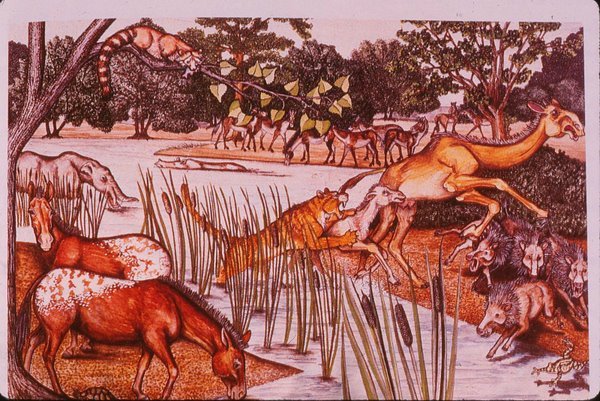
Figure 9: Oligocene faunas, 36 Ma
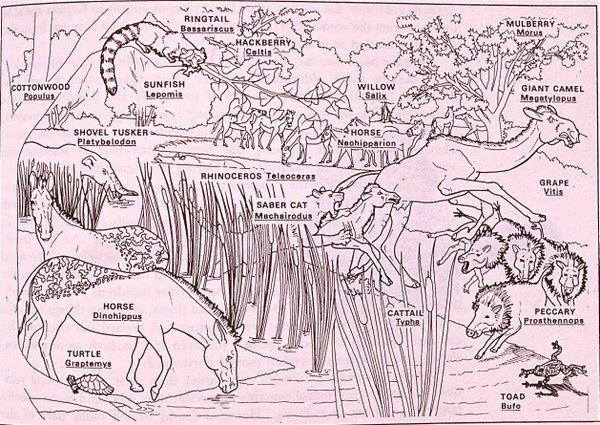
The climax of mammalian diversity occurred during the Pliocene epoch about 10 Ma. Then climate cooled during the Pleistocene epoch (2.5 Ma to 10,000 yr BP), causing the most recent ice age. Rapid warming at the end of the Pleistocene and mass extinction of Pleistocene megafauna marks the beginning of the Holocene epoch (10,000 yr BP to the present). What caused this extinction event? The main causes a
re thought to be rapid climate change and/or over-hunting by humans.
10) Man came on the scene during the late Cenozoic era. Homo sapiens sapiens appeared about 100,000 to 200,000 years ago. For the past 10,000 years, man has dominated the world, domesticating plants and animals and probably aiding in the extinction of the Pleistocene megafauna, including the mammoth, ground sloth, Irish deer, etc. And today there about 6.7 billion humans competing for finite plant and animal resources throughout the globe.
The Pleistocene/Holocene boundary at about 10,000 years BP is placed at the period of maximum extinction of large mammals, the Pleistocene megafauna. Again, smaller animals survived.
1) Gradualism, Catastrophism, or “Punctuated equilibrium”? (includes sudden appearances of species and sudden mass extinctions). The fossil record indicates that species seem to appear and disappear rapidly. Gould’s revised idea of Darwinian evolution, still based on mutation and natural selection, is called “punctuated equilibrium”. This concept combines the theories of evolution, gradualism, and catastrophism. In other words, things change slowly or not at all until there is large environmental change (such as rapid climate change, asteroid impact, volcanic activity, etc.) and then things change rapidly.
Today we have some 5 to up to 100 million species, of which only about 2 million have been described. And this number has been about the same for the past 600 million years. The level of ecological diversity has increased slightly or has remained about the same since the Cambrian Period. But the fossil record suggests that about 99.9% of all the species that have ever lived have gone extinct. As one statistician put it: “Statistically speaking, all species are extinct.”
2) Cycles of extinction?: Some scientists note that we seem to have major extinction events about every 250 million years. But there also seem to be brief periods of accelerated extinction which occur every few tens of millions years (about 26 million).
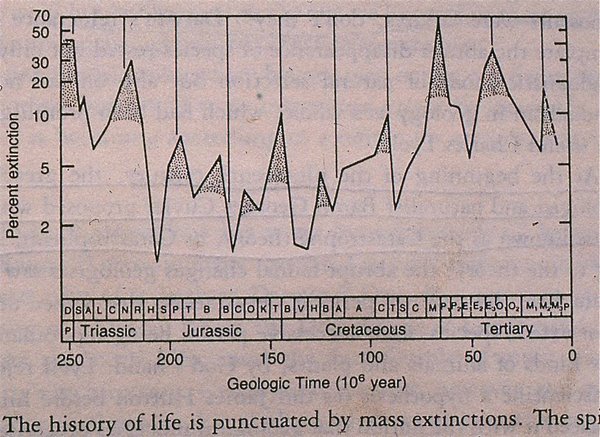
Figure 10. Extinction cycles during the past 250 million years, after Raup
3) Recurrent patterns: After a major extinction event the evolution of major groups of life seem to follow a 5-stage pattern:
a) adaptive radiation- original ancestral group spreads out and each subgroup adapts to its environment. This causes varieties of animals which are suited to different niches or habitats and is determined by food supply and environment.
b) widespread distribution- different varieties of animals move into all areas they can reach in which they can survive and the environment is right.
c) discontinous distribution- competition for food and living space or changes in climate cause some forms to decline and disappear.
d) isolated relict populations- result after further pressures reduce the number original groups to only one or two locales.
e) extinction- The average lifetime of a species is 1 to 10 million years. But some, like the sharks, have been around for much longer- sharks for nearly 400 million years).
These processes, especially distribution, are affected by barriers such as mountain ranges, deserts, oceans, etc., and corridors, or connecting points between environments such as the Bering Land Bridge.
C. Development of Humans (Homo sapiens sapiens= wise, wise man)
What’s different and special about humans? We make tools, reason, use fire, laugh, and play video games. We are the creature that wonders about our origins. The fossil record is still pretty sparse regarding our origins. New discoveries are constantly upsetting our concepts.
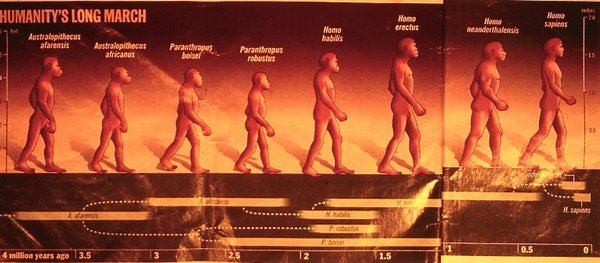
Figure 11. Evolution of humans, Time magazine
2) Australopithecus (3.9 to 1.5 Ma): In 1973, Donald Johnson and Tom Gray found remains of a 3.4 to 3.9 Ma upright hominid in eastern Africa (Ethiopia) (Australopithecus afarensis) which they named “Lucy” (after “Lucy in the Sky with Diamonds” song). She stood about 1 m tall and appears to have weighed 27 to 30 kg. Males would have stood up to 1.5 m tall and weighed up to 50 kg. Recent findings at the Institute for Human Origins (Berkeley) indicate that the species lasted almost a million years. A later species of Australopithecus (Australopithecus garhi at about 2.5 Ma) is associated with the earliest evidence of butchering animals.
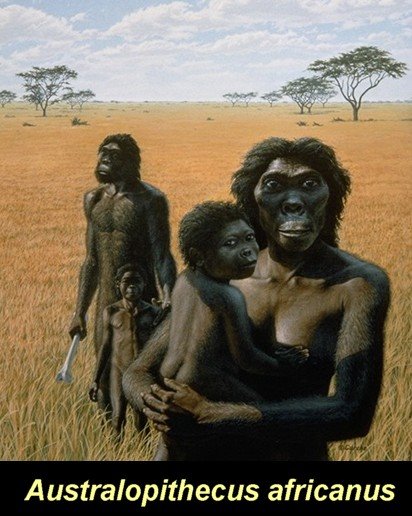
 Figure 12. Illustrations of early hominids and Homo Habilis
Figure 12. Illustrations of early hominids and Homo Habilis
3) Homo habilis (2.0 to 1.7 Ma): By about 2.0 Ma, two kinds of early hominids existed side by side- Australopithecus and Homo habilis (“Handyman”- the tool maker). Handyman, the first creature of our genus, Homo, made and used stone scrapers, cutting tools and hammer stones (but probably not for hunting). He stood less than 1.5 m tall and weighted under 45 kg.
4) Homo erectus (1.7 to 0.3 Ma): At about 1.7 Ma, Homo habilis evolved into Homo erectus (upright man). Homo erectus fossils are found to be widespread in Africa, Europe, China and Indonesia and span the period between 1.7 M and 300,000 BP. So he had over a million years to spread out and adapt. Homo erectus was a nomadic hunter/gatherer who stood about 5 feet, 6 inches tall, and was probably almost indistinguishable from modern man. He made impressive (Acheulean) tools, he used fire and cooked food, and made large structures out of wood. He probably evolved into Homo sapiens.
5) Homo neanderthalensis (200,000 to about 30,000 year BP): “Neanderthal Man” (including Homo neanderthalensis, soloensis, and rhodensiensis) left an extensive fossil record in Europe, Indonesia and S. Africa between about 200,000 and 30,000 year BP. They buried their dead, used tools, built homes, etc., but did not seem to have the artistic flair of their co-inhabitants of earth- Homo sapiens. Some argue that they were a subspecies of Homo sapiens and could therefore interbreed with modern man. In any event, Neanderthal disappears from the fossil record about 30,000 years ago.

Figure 13. Illustrations of Homo erectus, neatherthalensis, and sapiens
6) Modern man (Homo sapiens, or “wise man”) shows up in the fossil record in Europe about 35,000 years ago and in Australia 50 to 60,000 years ago (they came by water). But geneticists who study rates of mutation say that based on known rates of mutation you need at least 100,000 to 200,000 years of evolution and genetic mutation to get the variations we have between our modern races. They place our common grandmother “Eve” probably in Africa, or possibly in Asia. But recently Chinese scientists have discovered a modern-type skull at least 200,000 years old in China.
Certainly, the spread of modern man was influenced by climate. Humans evolved mainly during the Quaternary period, i.e., the last 2 million years, which coincides with the Ice Age. During this interval climates have been cooler than the average for the planet, but have fluctuated between glacial and interglacial climates.
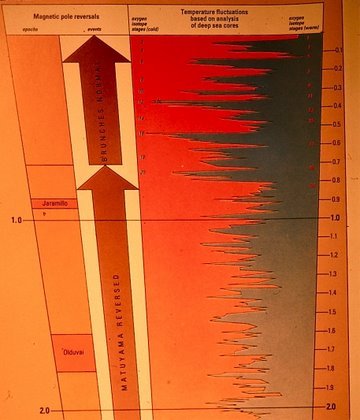
Figure 14. Climate fluctuations during the last 2 million years. Red is relatively warm and blue is relatively cool
The last glaciation (Wisconsin glacial stage) occurred between about 70,000 and 12,000 BP. People in Europe withdrew to caves during this time. We find reindeer bones with human bones in caves in Spain. Cave paintings of Lascaux, France (15K yr BP) and some as early as 35 K yr BP) show this to be a period of artistic excellence. As glaciers grew on land, sea levels dropped and man was able to walk across corridors like the Bering Land Bridge, across the English channel, etc.
7) Neolithic Revolution– Age of Agriculture, beginning about 10,000 years ago. At this time, man learns to cultivate plants and domestic animals. Surprisingly, agriculture seems to have developed independently in different regions at about the same time.
DATE REGION DOMESTICATED PLANTS
10,000 BP- Middle East wheat and barley
Now with a more abundant stable food supply, populations grew and settlements became much larger and cities developed. But agriculture actually required more labor and longer hours than hunting/gathering, so people only turned to it after their natural resource base was no longer adequate. Today, this earlier hunter/gatherer way of life survives only where agriculture has not yet been adopted in a few scattered locations around the globe.
Date Estimated world population % of humans as hunter/gatherer
15,000 BC 10 million 100%
1000 AD 350 million 1%
2000 AD 6 billion 0.00001%
References:
Gould, S. J., 1989, Wonderful Life; the Burgess Shale and the Nature of History, W.W. Norton and Co.,
New York, 347 pp.
Mathez, E.A., Ed., Earth: Inside and Out, The New Press, New York, 238 pp.
Scientific American, Special Edition, August 25, 2003.
Svensmark, H., and Calder, N., 2007, The Chilling Stars: A New Theory of Climate Change, Icon
Books, Ltd., UK, 246 pp.
Ward, P.D. and Brownlee, D., 2000, Rare Earth: Why Complex Life is Uncommon in the Universe,
Copernicus, 333 p.